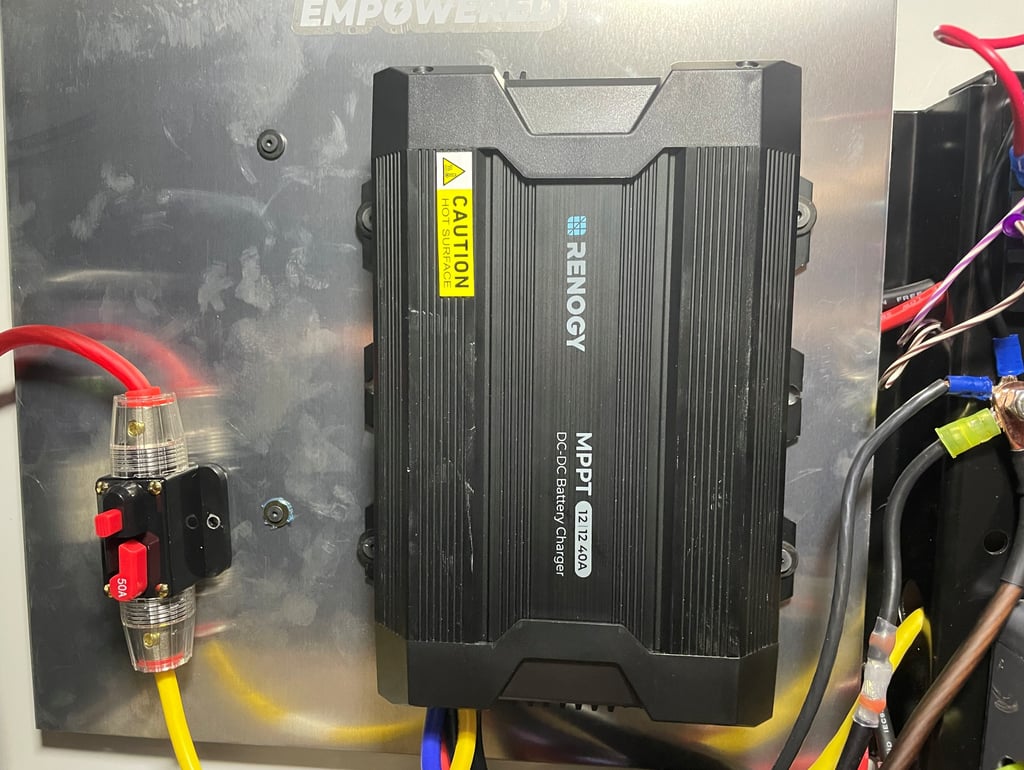Review: Renogy 40A DC-DC Charger – Solid, Smart, and Just Shy of Perfect
There are a few moments in an overlanding build where you feel like you’ve officially leveled up. Installing a DC-DC charger is one of them. It’s the electrical equivalent of graduating from bungee cords and milk crates to a full drawer system. It means you’re ready to trust your rig—and your gear—to go further off-grid. I installed the Renogy 40A DC-DC Charger, and here’s the honest, trail-tested scoop.
GEAR
The Nomad
7/7/20252 min read


👉 Buy it on Amazon
🔧 Easy Install & Clear Instructions
Out of the box, this thing just makes sense. The mounting brackets are solid, the connections are well-labeled, and the instructions are actually readable—a rare thing in the world of electrical gear. If you’re reasonably handy with a wrench and not afraid of a few crimps and terminals, you’ll be up and running in an afternoon. If you have a heat gun (or a really good hair dryer) the box includes some soldering heat-shrink butt connectors. Which makes for a really clean install.
☀️ Solar or Alternator? Choose!
One of my favorite features is the priority setting between solar and alternator charging. You don’t have to guess which source the charger is pulling from—you tell it. This flexibility is huge if you camp in a range of climates or move between trail days and layover days under the sun.
Switching from solar to alternator is just a flip of a setting, and it makes the most of your available energy sources without frying your system or draining your start battery.
⚠️ No Solar Performance Readout
Here’s the one caveat: this charger doesn’t give you any visibility into your solar input. If you’re hoping to nerd out on how much wattage you’re pulling in or want to troubleshoot panel efficiency, this won’t cut it on its own.
You’ll need something like a smart shunt or battery monitor to get those metrics. I ended up grabbing this battery monitor after realizing my mistake. I originally bought the Renogy BT-2 direct from Renogy, only to learn it doesn’t work with the 40A model (it’s designed for the 50A). My bad—but learn from my mistake. Buy it on Amazon where returns are easier, and you don’t get hit with restocking fees.
📈 Pro Tip: Evaluate Battery Size & Charge Time
Before you choose between the 40A and 50A models, take a good hard look at your battery bank.
If you’re running a 100Ah AGM or lithium, the 40A may be just fine.
But if you’ve got a 200–300Ah lithium setup (like I do), the 50A would have shaved real time off my charge cycles.
Here’s a basic rule of thumb: aim for a charge rate that’s 20–30% of your total battery capacity. So, 40A for a 200Ah battery works—but it’s not ideal. Plan for what you’ll grow into, not just what you’ve got now.
✅ Final Verdict
Would I buy the Renogy 40A DC-DC Charger again?
Yes... but also no.
The product itself is solid, well-made, and performs exactly as advertised. But knowing what I know now about my future upgrades and battery bank, I’d personally go for the 50A version instead.
Still, if you’re in the market for a mid-sized charger that installs clean and gives you charging control on the trail, this one will absolutely get the job done.
